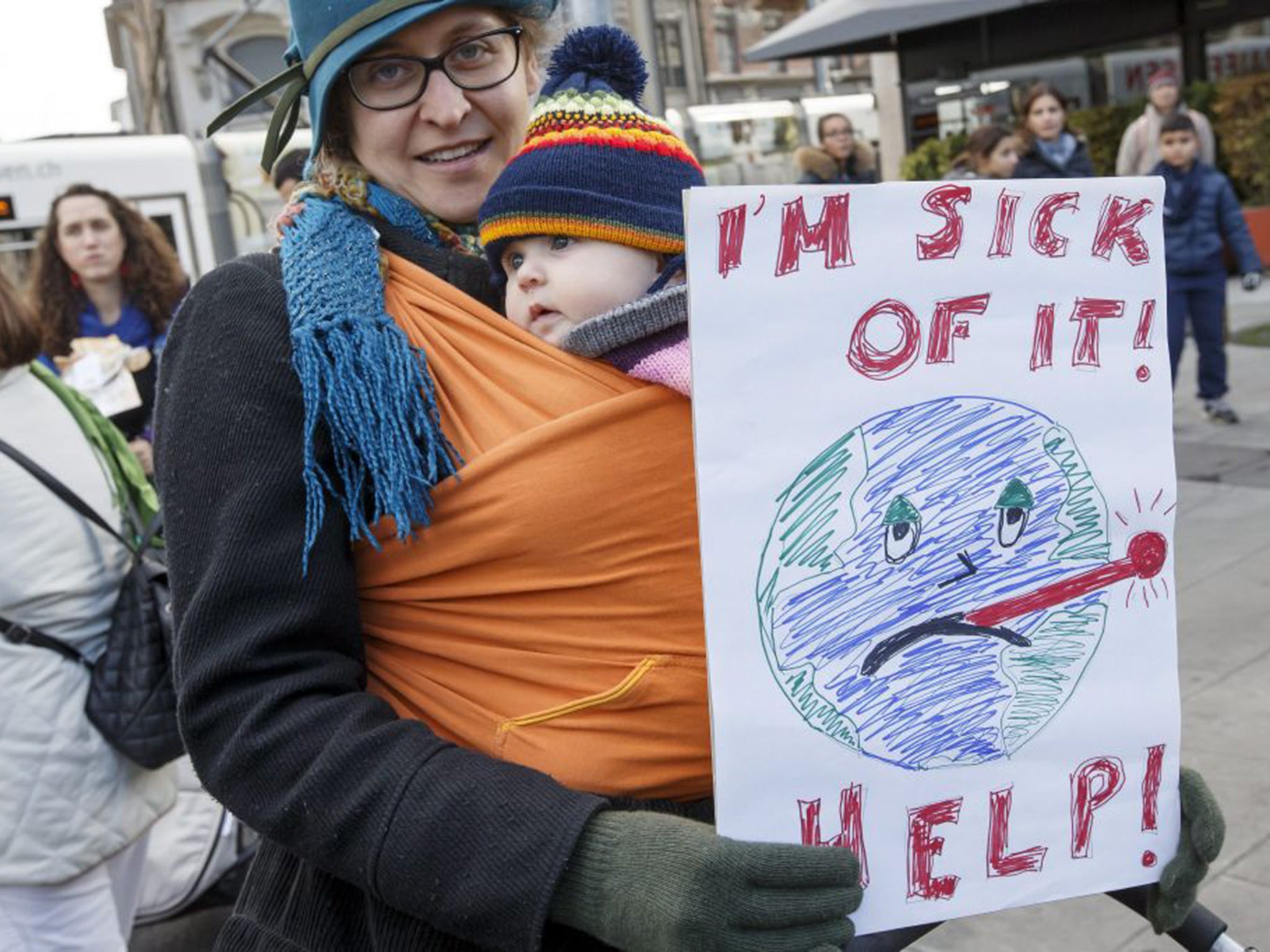Earth Day: Why 2016’s event looks set to be most important ever
The Paris Agreement represents perhaps the most important moment for our climate in recent years – but scientists have argued that it doesn't go far enough

Leaders of 160 countries are about to sign one of the most important agreements for the future of the Earth.
The Paris Agreement, agreed late last year, is to be signed on Earth Day – the biggest civic event in the world and a celebration of the planet.
The signing ceremony in New York will be the biggest signing of an agreement in history, according to the UN, and never before have so many countries been present on the first day of an agreement.
The huge support for the pact could help speed up the deal, making it effective long before the 2020 deadline. It might even be able to come into effect by the end of this year, depending on the speed that it can be agreed upon through country’s domestic procedures.
The US and China – which together make up 40 per cent of global emissions – have committed to join the agreement this year.
"We are within striking distance of having the agreement start years earlier than anyone anticipated," Brian Deese, an adviser to President Barack Obama, said in a speech last week at Reed College in Portland, Oregon.
It needs 55 countries, representing 55 per cent of emissions, to agree to it before it will come into effect. Leaders hope that will be possible soon.

"There's incredible momentum," former New Zealand Prime Minister Helen Clark, who heads the U.N. Development Program, told The Associated Press. "We're moving as quickly as possible to action."
Countries are already working together to push forward on the deal, meaning that the agreement could be ready to come in soon.
The Paris Agreement contains a range of measures that are meant to counteract the damage climate change is doing to the planet (see below). When it was signed late last year it was heralded as a spectacular success, and the end of a long period of stagnation in climate negotiations.
But even if countries manage to bring the agreement into effect soon, it may not be enough. Scientists say that the measures in the document might not be enough to keep temperatures below the 2 degrees Celsius limit that, if breached, could cause huge damage across the world.
"Even if the Paris pledges are implemented in full, they are not enough to get us even close to a 2-degree pathway," said John Sterman, of the Massachusetts Institute of Technology. "I don't think people understand how urgent it is.”
Even if the pledges in the agreement are upheld, the world could be on track to rise as much as 3.5 degrees C, according to some analyses.
Here are some of the key elements of the Paris deal, which is the first agreement requiring all countries to join the fight against global warming.
TEMPERATURE GOAL: The objective of the agreement is to keep the global temperature rise "well below" 2 degrees Celsius (3.6 degrees Fahrenheit) compared with pre-industrial times. At that level, scientists believe the worst effects of climate change can be avoided. The agreement also includes an aspirational goal of limiting the temperature rise to 1.5 degrees C (2.7 degrees F). Temperatures have already risen by almost 1 degree C (1.8 degrees F) since the industrial revolution.
INDIVIDUAL TARGETS: Countries are required to set national targets for reducing or reining in their greenhouse gas emissions. Those targets aren't legally binding, but countries must report on their progress and update their targets every five years. The first cycle begins in 2020. Only developed countries are expected to slash their emissions in absolute terms. Developing nations are "encouraged" to do so as their capabilities evolve over time.
TRANSPARENCY: There is no penalty if countries miss their emissions targets. Instead, the agreement relies on transparency rules to motivate countries to fulfill their pledges. All countries must report on their efforts to reduce their emissions. But some "flexibility" is allowed for developing countries that need it, which was a key demand from China.
MONEY: The agreement says wealthy countries should continue to offer financial support to help poor countries reduce their emissions and adapt to climate change. It also encourages other countries to pitch in on a voluntary basis. That paves the way for emerging economies such as China to contribute, even though it doesn't require them to do so. Actual dollar amounts were kept out of the agreement itself, but wealthy nations had previously pledged to provide $100 billion annually in climate finance by 2020.
LOSS AND DAMAGE: In a victory for small island nations threatened by rising seas, the agreement includes a section recognizing "loss and damage" associated with climate-related disasters. The U.S. long objected to addressing the issue in the agreement, worried that it would lead to claims of compensation for damage caused by extreme weather events. In the end, the issue was included, but a footnote specifically stated that loss and damage does not involve liability or compensation.
WITHDRAWAL: The agreement will enter into force 30 days after 55 countries accounting for at least 55 percent of global greenhouse gas emissions have completed the ratification process. It's possible to withdraw from the treaty, but not in the first three years after it enters into force. There's also a one-year notice period, so the earliest a country could drop out is four years after the agreement has come into effect.
Additional reporting by Associated Press
Join our commenting forum
Join thought-provoking conversations, follow other Independent readers and see their replies
Comments
Bookmark popover
Removed from bookmarks